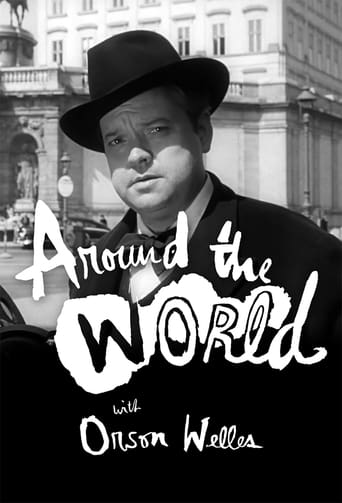lightplume
Missing in the reviews above and blurbs on the DVD is mention of the the only full-length interview on film of Isadora Duncan's brother Raymond Duncan (in the Paris segment). The eighty-year-old artist shows his sculptures inspired by the Greeks, shows us around his printing presses where he sets type he designed emulating the Greek alphabet, tells us why he is dressed in the classical Greek clamys (the Greek equivalent to the toga), and expounds on his philosophy of life which emphasizes individualism. He is bright, alert, endearing. And, by the way, he did not run his Akademia as a commune, but as an art center which included art studios, a theater where musicians, poets and actors appeared twice a week, and an art gallery. Raymond Duncan would return to America every year or so (except during WW II) to do his one-man show at Carnegie Hall or Town Hall in NY. Orson Welles is a fine interviewer, allowing his subjects to tell their stories with dignity. He loves people. This series shows us how it can be done with one camera and a tiny crew: the magical element is Orson Welles' unpretentiousness.
EddieK
Following Orson Welles' fascinating yet tantalizing career can be frustrating for the aficionado. So much of his oeuvre remains hidden from view that each discovery from the archives is greeted with an inordinate amount of enthusiasm. Take this intriguing yet relatively disappointing collection of documentaries Welles directed for British TV in the 1950s.The documentary series explores various aspects of European Culture. Welles takes his camera in search of Basque country, Spanish bullfights, the idiosyncratic denizens of Paris' St Germain des Pres, and the loquacious and venerable Chelsea Pensioners. The "St Germain des Pres" episode best typifies the offbeat subject matter. Welles spends most of his time interviewing a commune dweller who makes his own clothes. After that, Welles dashes through the town, capturing glimpses of celebrities like Jean Cocteau and Eddie Constantine ("Lemmy Caution"), before discovering a group of "Letterists" who are dedicated to (you guessed it) inventing new letters.Unfortunately, Welles' typically low budget and the nature of the subject matter limit his range of cinematic expression. Despite the exotic and obscure locales, most of the footage consists of relatively static interviews, captured in long takes with obligatory reaction shots of Welles inserted to break up the monotony. Even the bullfight episode lacks the dynamic footage one might expect; Welles' camera is grounded in the stands, preventing him from getting involved in the action.The highlight of the series is the second Basque episode. True, the first few minutes repeat the introduction from the first Basque show, but after that Welles has a lot of fun interviewing kids playing 'pelote' (a game similar to jai alai). Welles gets his camera into the pelote action, and seems rejuvenated by the subject matter. An 11-year old boy joins Welles and acts as a tour guide for the rest of the show. The episode ends dramatically, with Welles quoting a Basque aphorism against a night sky lit by fireworks.For a better example of Welles' creativity in the documentary genre, check out his 1974 essay film, "F for Fake." "Around the World with Orson Welles" is a far more pedestrian effort, but it should whet the appetite of Welles fans who continue to search for "lost classics" among the great director's oeuvre.
r-e-witt
The DVD version I've seen has five episodes: St. Germain Des Pres, Chelsea Pensioners, Madrid Bullfight and Pays Basque I & II. Films like this are as close as we may ever come to traveling in time. Welles' inimitable self is revealed here as nowhere else as he travels about Europe, meeting, greeting and interviewing. A rich "cast of characters," the real people encountered on the journey, make for a remarkable study. At times, not only is the influence of the recent war apparent, but also the ominous sense of life at the "dawn of the nuclear age." It's a shame only that there aren't more episodes. Long live Orson Welles!

